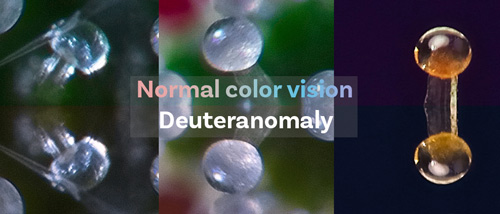
Approximately 1 in 12 people (8%) have difficulty seeing colors. When it's time to harvest cannabis, you should mainly look at the discoloration of the trichomes on the buds of your flowering cannabis plant. But how do you do that if you find it difficult or even impossible to see certain colors? This is a good question from a customer who contacted Dutch-Headshop. In this blog, we provide tips and advice for harvesting cannabis for every form of color blindness (CVD).
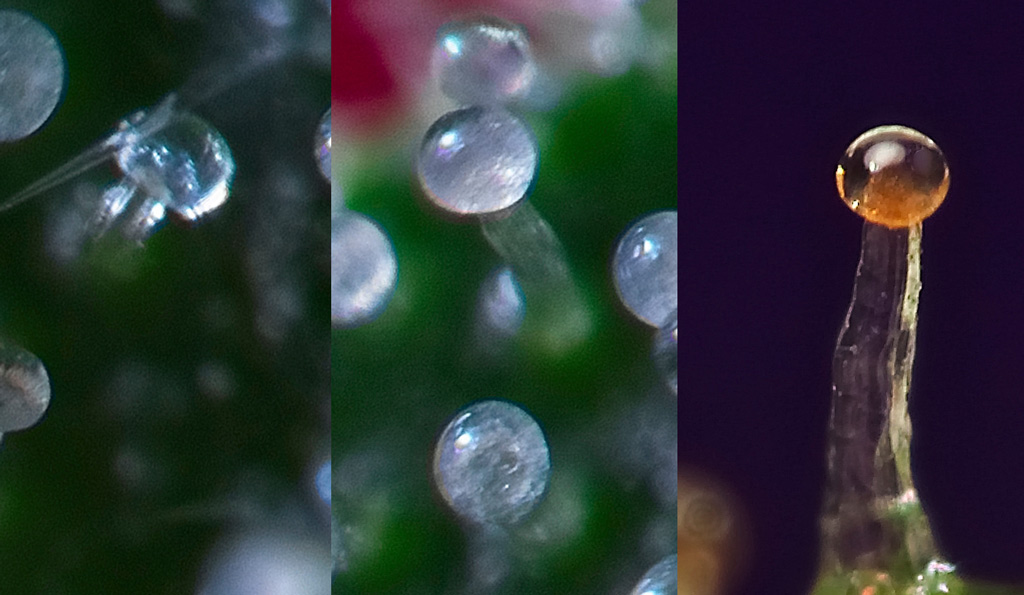
This is what the discoloration of trichomes looks like for most people.
If you can see all colors, you might wonder why we are writing a blog about color blindness. But in the Netherlands alone, about 700,000 people have some form of color blindness. With such a number, it is likely that there are people who would like to grow a cannabis plant in the garden or under a state-of-the-art LED grow light. Let's take a look at what mature and immature trichomes look like.
Trichomes
In short: The trichomes of cannabis plants are the resin glands that grow mainly on the flowers and a bit on the surrounding leaves. They produce the resin in which THCA, CBDA, and other cannabinoids and terpenes wait to make you happy. THC and CBD only form when substances with an -A at the end are heated. This is called decarboxylation.
With a magnifying glass, you will see that at the end of the flowering period of your cannabis plant, the trichomes begin to change color. From transparent to milky white to amber and finally brown. Waiting to harvest until most of the trichomes have changed color has several advantages:
- Transparent - Glassy trichomes are still developing. Moreover, you see trichomes already in the first flowering period and the yield is somewhat lower. However, you can harvest strong indicas around this time. The taste is now the sweetest.
- Milky white - Both THCA and CBDA are at their peak. The best time to harvest hybrid cannabis is when most trichomes are milky white.
- Amber - THCA slowly degrades into CBNA, reducing potency. However, this is the time to harvest sativa-dominant strains (haze). The plant has more time to grow and thus a slightly higher yield. The total amount of cannabinoids is now the highest.
- Brown - By waiting the longest to harvest, the yield is likely the highest. On the other hand, the taste is not as pleasant for most people. Also, the degradation of THCA into CBNA is more advanced.
The problem with all the research done so far on the goodies in these resin glands is that it has been done on a limited number of samples. The samples were also analyzed at different times after harvest [1]. Therefore, consider the above information as a guideline: the darker the trichomes, the less THCA. Back to color blindness.
And the photo we will compare later:
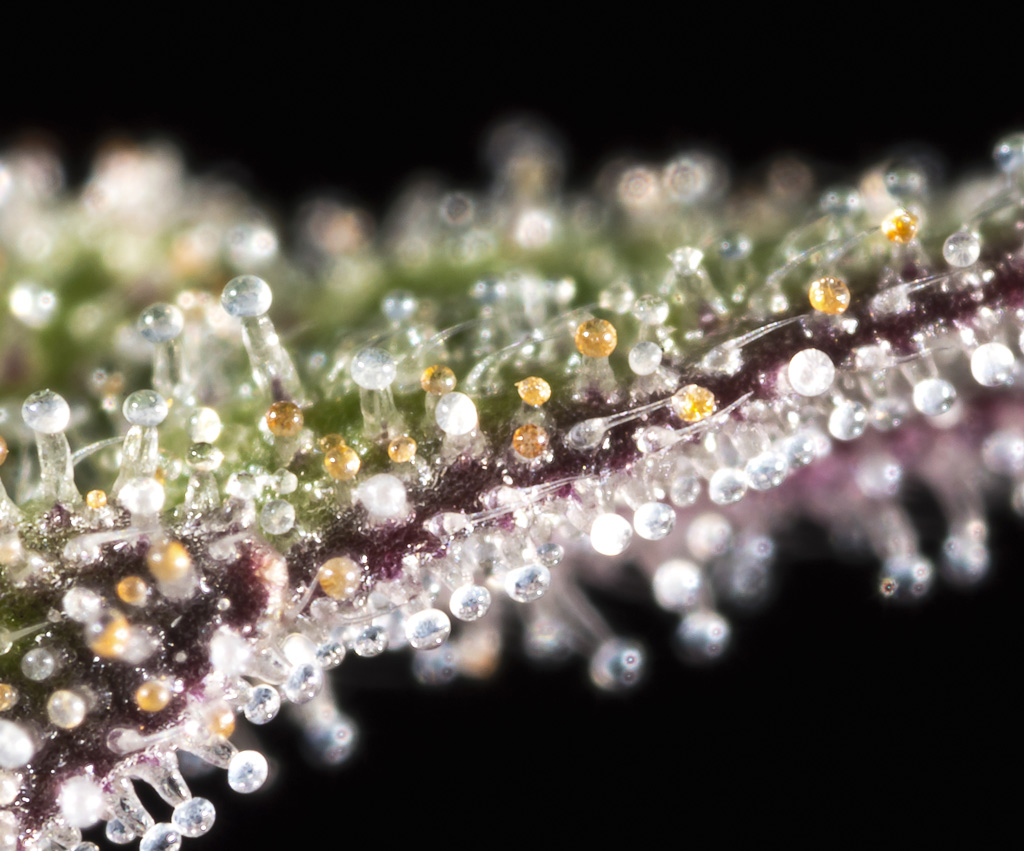
Red-Green Color Blindness
If your retina has few green cones or they are not functioning properly, this is called deuteranomaly. The vast majority of people have this form of color blindness. If you cannot see green at all, it is called deuteranopia. If your red cones function less or not at all, it is called protanomaly or protanopia. Under a powerful magnifying glass, the trichomes look like this:
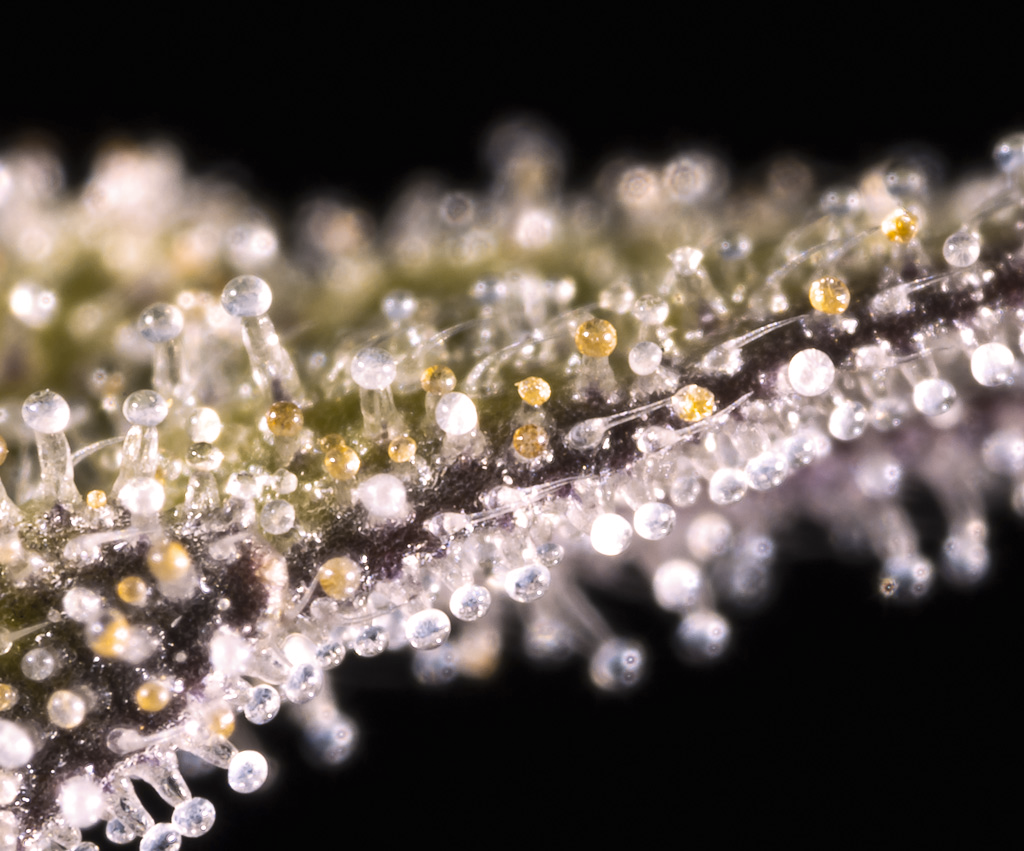
Deuteranomaly - The difference is okay to see.
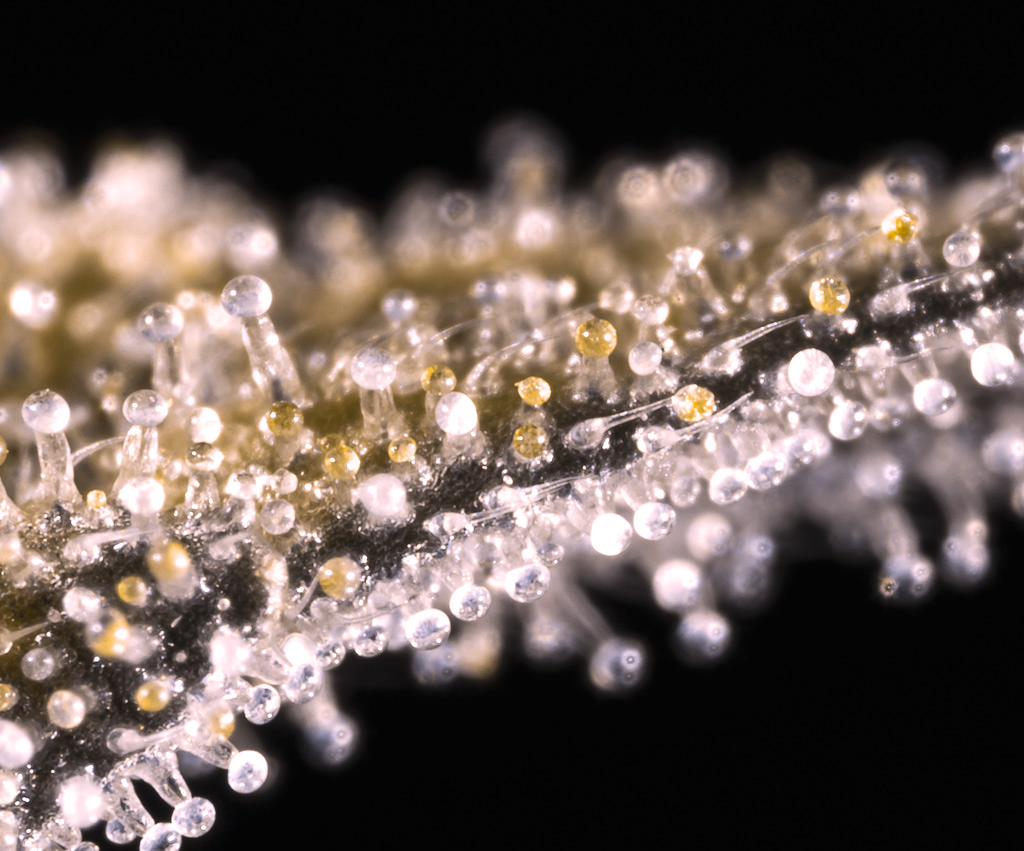
Deuteranopia (green-blind) - The difference between amber trichomes and chlorophyll is harder to see, but you can well judge whether trichomes are white or clear.
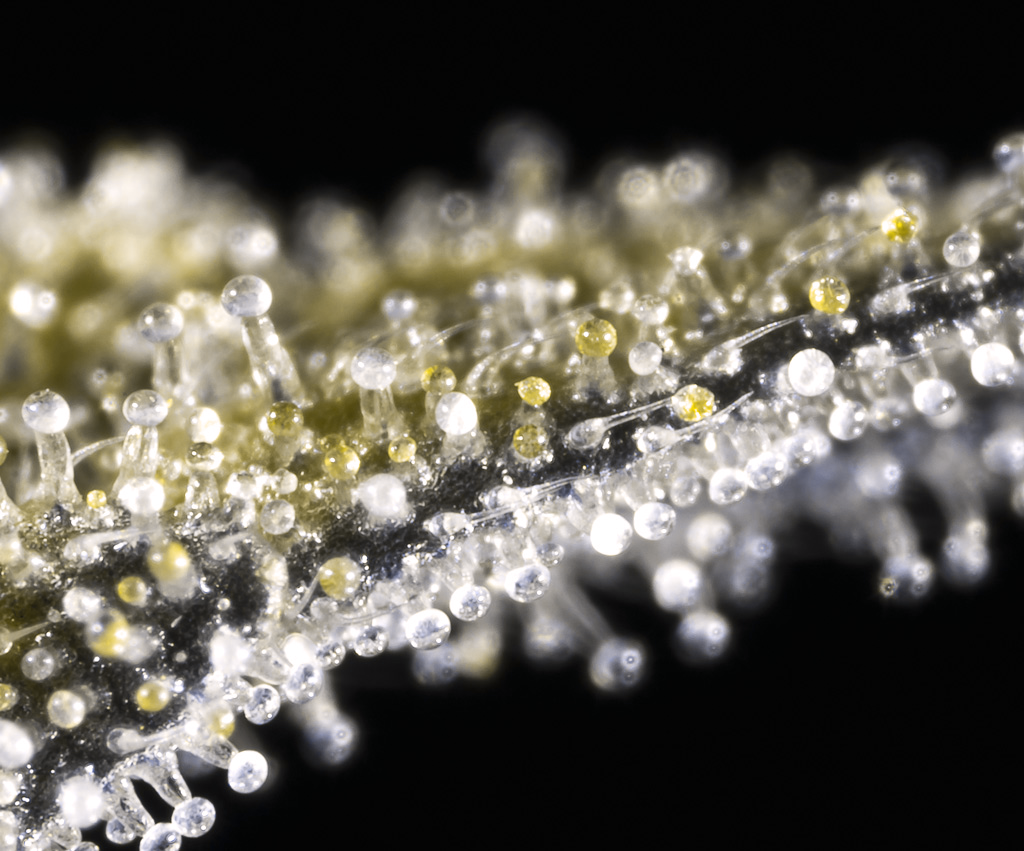
Protanomaly - The difference is again okay to see.

Protanopia (red-blind) - Just as when you cannot perceive green, the difference between clear, milky trichomes and amber trichomes is easy to see if you look at the differences in brightness.
Blue-Yellow Color Blindness and Complete Color Blindness
Something much less common is that you cannot distinguish blue well (tritanomaly) or not at all (tritanopia) from other colors. And if blue is the only one that remains (monochromacy), it is extremely rare. Finally, there is a condition where the retina contains no cones. This is called achromatopsia. In this case, you only see differences in light and dark. Below you can see what this looks like:

Tritanomaly - The difference is easier to see. The red trichomes stand out.
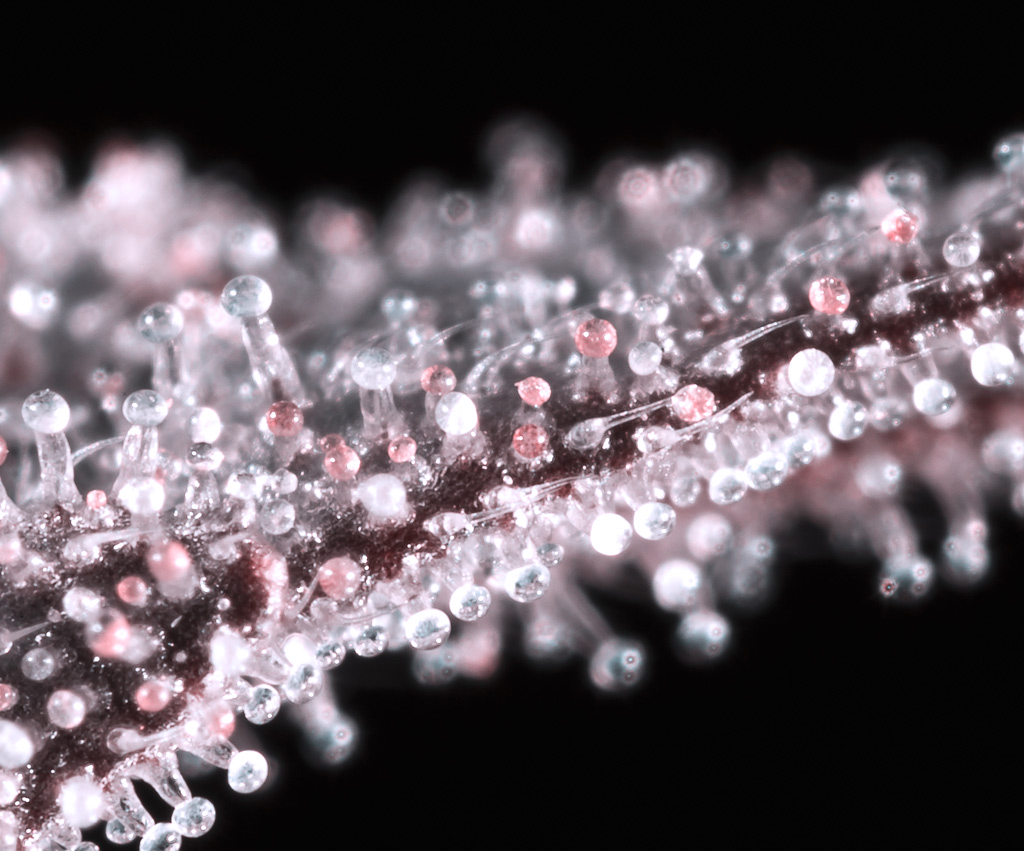
Tritanopia - Although slightly less intense than above, the overripe trichomes are still very visible.
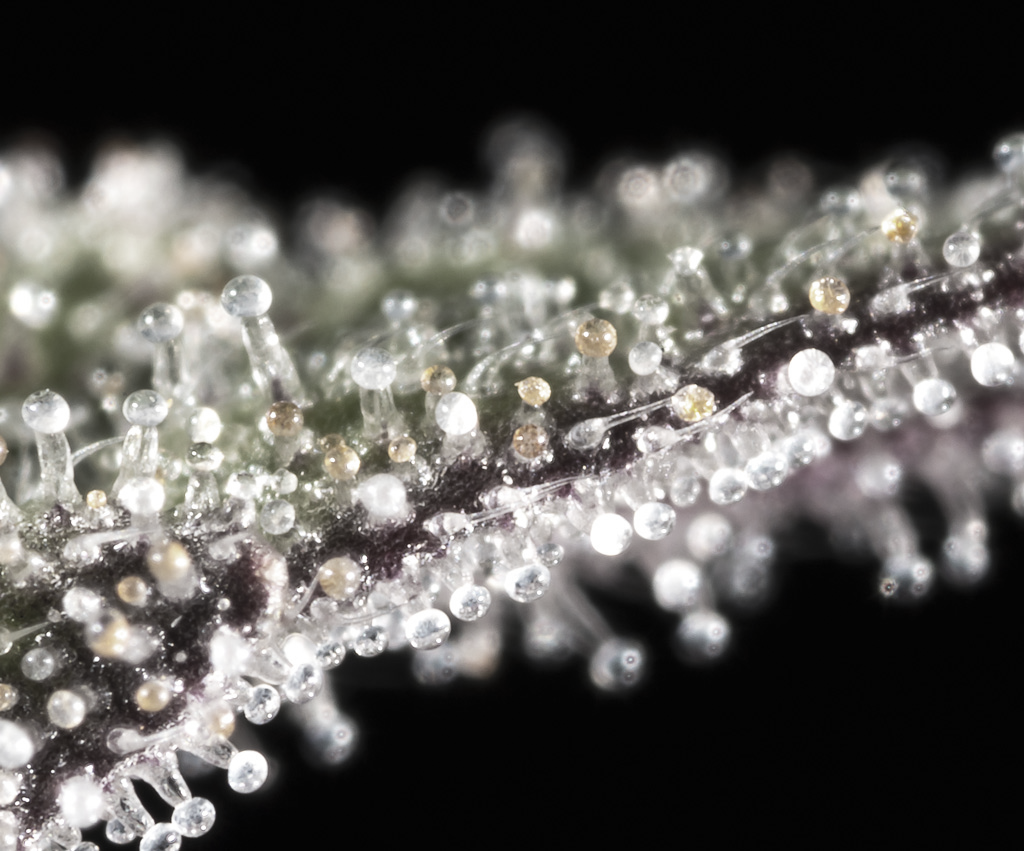
Blue monochromacy - If you only have (working) blue cones, it doesn't mean the whole world looks blue. The mature trichomes are harder to distinguish. Pay attention to the darker trichomes and the ratio of clear to cloudy trichomes. More cloudy than clear? Then it's time to harvest within the next 2 weeks. In any case, stop giving plant nutrients.
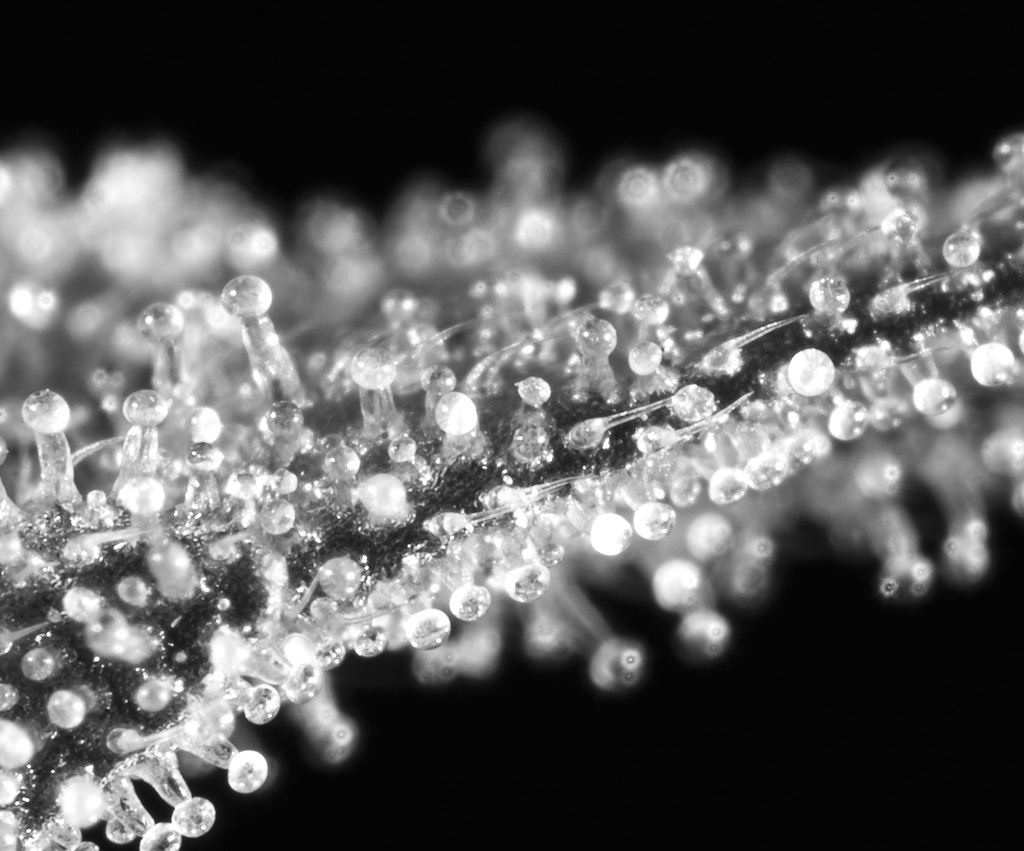
Achromatopsia - If you see the world in black and white, it is extremely difficult to see the differences in the trichomes.
Our Tips for Color Blindness
Pay particular attention to the difference in brightness between the stages the trichomes go through. For the 1 in 30,000 people who see no color at all, harvesting cannabis at the right time will be difficult. It is better to track the flowering time. Does the product description say the flowering period is 7 to 9 weeks? Then harvest the cannabis plant at the end of the 8th week for the theoretical sweet spot.
Sources:
[1] Sutton, D.B. 'Characterization of trichome phenotypes to assess maturation and flower development in Cannabis sativa L. (cannabis) by automatic trichome gland analysis'. Smart Agricultural Technology Volume 3, Feb. 2023.